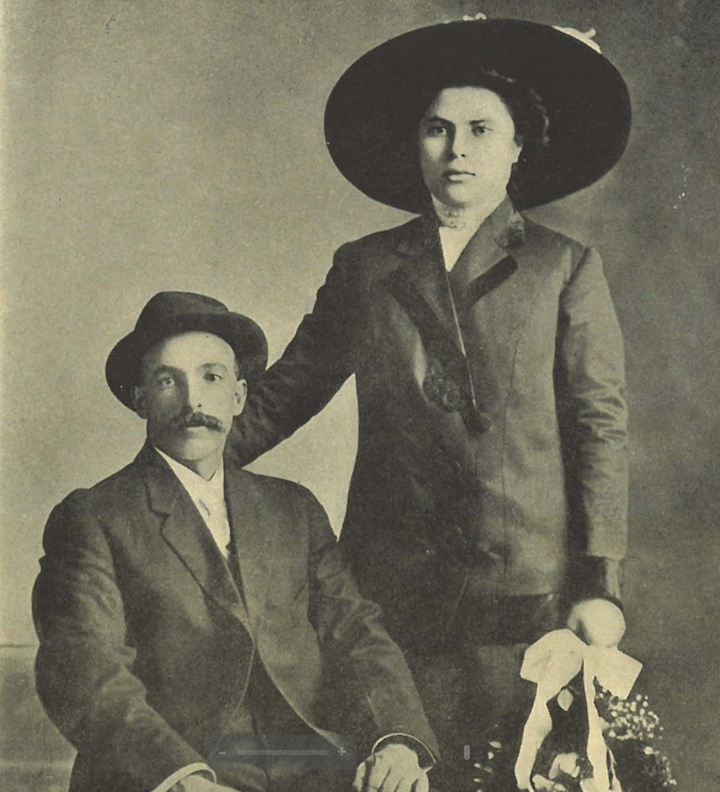Since at least the time of the Spanish conquests, Basques have been a feature of the American West. Basques were a big part of the Spanish armies that rolled over South America, Mexico, and southwestern United States. They came later as well, after the Carlist Wars, after the gold rush of the mid-1800s, and in the aftermath of World War II to help fill labor shortages. An untold number of Basques established roots in the American West and Basque names dot the landscape. Sol Silen’s The History of the Basques in the West was an early attempt to document some of that history.

- La Historia de los Vascongados en el Oeste, or The History of the Basques in the West in English, is a curious book. In some ways, it is a who’s-who of the Basque families living in various parts of Idaho, Oregon, and Nevada during the beginning of the 1900s. Biographies and photos of Basque men and women fill the three volumes but, as with the modern who’s-who books, it has a feel of not objective history but individual promotion.
- The original was written primarily in Spanish in 1917, but the Basque Museum and Cultural Center in Boise, through the hard work of Aintzane Gonzalez, translated it into English, almost exactly 100 years later in 2018. Both versions appear online on the Basque Museum’s website.
- My namesake, Blas Telleria, his wife Ines Eiguren, and their son Jose Telleria (my grandfather) are all pictured in the book. Blas is described as a “tenacious, young man with an unwavering purpose” who combined “excellent judgement and great integrity.”
- Not much is known about the author, Sol. He seems to have been born in Russia, though moved to the United States at a young age with his parents. He eventually made his way west and somehow grew attached to the Basques, possibly via the sheep industry. In addition to writing The History of the Basques in the West, he also defended the Basques in the media, penning a letter to the Reno-Gazette Journal in 1916 defending the Basques against attacks by Senator Key Pittman, who had called them “nothing but a sheepherder.”
Primary source: The Basque Museum and Cultural Center.
Discover more from Buber's Basque Page
Subscribe to get the latest posts sent to your email.


Greetings,
The “History of the Basques in the West” what a wonderful post!!!
I always thought that the Basques who came to the Americas and at West were highly respected. Last Fall, when I visited my niece in Campo les Bains, we went to see an exhibition of the painter/illustrator Pablo Tillac–he was given the name Pablo by the Basques–is first name was Jean Paul Tillac. Born in Angouleme in 1880 and died in Cambo les Bains in 1969. Pablo defended the Basques culture and its people through his paintings and illustrations. His Bio. and work is on the internet.
Among the work of Tillac’s, there was an illustration that shocked the heck out of me. The attribution Senator Key Pittman, ” nothing but sheepherder” was pale in comparison to what Mr.Pittman might have said in private.
With the permission of the Museum’s director, I took 2 pictures of the illustration and if Blass/Buber would like to see them or post them on the Web site, he needs to guide me on how to do it because I am not savvy with the internet.
While I spoke with the curator of the exhibit, I found out that the bulk of Mr. Tillac work is in museum in Reims, France.
Monique
Hi Monique! I would certainly like to see those photos. I don’t know if I could post them without permission of the museum though. You can email me directly at blas@buber.net.
Thanks for introducing me to Tillac! I will have to delve a bit more into his work!
Greetings,
Ok. will send the photos.
The exhibit contained my illustration of the trial of the Witches of Zugarramurdi –the Basque Billy Goat –there is some info. on the net about the trial.
I am sending you a photo of the Canfranc’s train station. Franco desired was to make the Canfranc train station the showcase of Europe. The Spanish government is trying to restore it to its former grandeur. In spite of the stations dark past ( it was used to transport Jews and anyone who did not agree to Franco’s politics, to concentration camps as well as transporting millions of kilos of gold out of Spain), it is beautiful inside–marble stairs, gorgeous carved wood and lots of light–365 windows.
Folks, stay safe and healthy–I am 81 years old and have seen a heard of a lot of tragedy in my life. Coronavirus does not scare me much.
Monique
Just to let you know, Monique, I got your emails, I just haven’t had a chance to respond. I hope too soon.
“He came from Russia with his parents” …
I wonder if he was an orphan from the Gernika bombing and was adopted by a Russian couple?
I haven’t seen anything that said that. You never know, I guess. Why he became so interested in the Basques is a mystery.